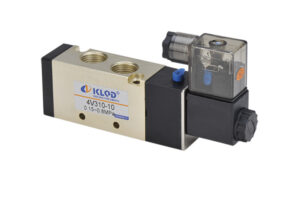An optical transceiver is a device that transforms high-speed data from a wired source into an optical signal for transmission across the optical fiber. Optical transceivers are utilized to update communications networks to handle broadband, update data center networks to control traffic at greater speeds, and construct a mobile backbone network.
Pluggable optical transceivers like a 400G QSFP-DD module have several advantages. With the introduction of modules, the benefits can be increased. A 120 km reach module, for example, can have low energy consumption and a tiny footprint. These modules are intended to make wavelength control easier and eliminate fiber exhaust. While these are only a few advantages of pluggable fiber optic transceivers, there are plenty more.
- Cost-effective, universally compatible, and capable of reducing power usage
Pluggable optics like a 400G SR8 transceiver module may be employed in nearly any place at a low price due to its skillful mix of a flexible nature with a low-power, low-cost solution. Users obtain a lot of value for minimal expenditure, making this a highly recommended alternative. Additionally, pluggable optic devices are made to work with various other devices. They also work with a variety of configurations and channels. Universal electronics also make it easy to locate replacement parts and obtain repair services. Pluggable optics are also a low-power, high-speed alternative. Their effectiveness will reduce the load on your system while maintaining a high data transfer rate and improved internet connectivity.
- Replacements or repair is easy
Fiber optic transceivers with pluggable connectors such as a 400G QSFP-DD module are simple to replace or repair and may be used in a range of applications. They don’t have to be turned off in most cases to be replaced. As a result, most designers suggest pluggable optical transceivers and SFP pluggable devices. If the device fails or has to be upgraded, a pluggable fiber optic transceiver will make it simple. It takes a few easy steps to open the unit and swap the transceiver, and the operation is over. Experts can assist with the procedure, but most individuals with sufficient technological knowledge can do it independently.
- Communication range and data rate
SFP transceivers excel in transporting data and information via fiber between networks. The copper cable or fiber optics conveying signals make communication possible. Optical transceiver modules can also assist with signal delivery. You may generate long and short-range communication through networks, and transceivers can support both forms of communication.
Typically, data-moving transceivers such as a 400G SR8 module are offered at a specific speed. You can take action faster if data can arrive at its destination sooner. Pluggable optical transceivers with adjustable data rates can build self-healing redundant networks for mission-critical applications or allow physical layer multichannel broadcasts of any protocol within their range. Most applications want a faster data transmission rate, but “how fast” depends on the application. When employing different types of fiber cables, the Finisar FTLF8524P2BNV SFP transceiver, for example, can enable up to 4.25Gb/s bi-directional data communications over a maximum distance of 15om and 2.125Gb/s data rates over a maximum range of 300m.
Because there are so many different types of pluggable optical transceivers, you might not know which one is right for you. Consequently, to make the best decision, search for tailored solutions and expert help from a skilled team of specialists.





